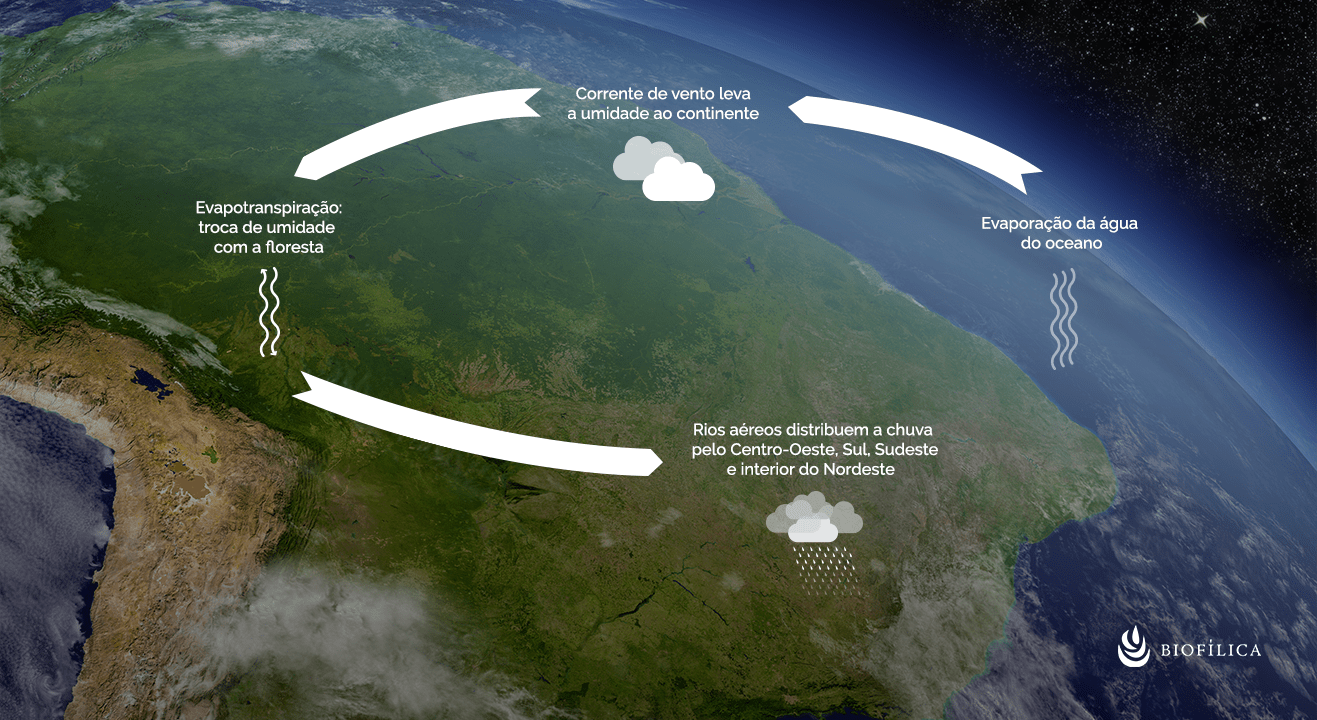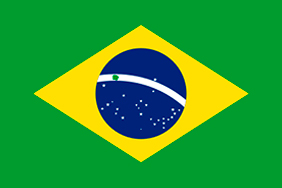The Rio Preto Jacundá Extractive Reserve, located northeast of the state of Rondônia, is home to 130 traditional residents, whose livelihood is based on extractive activities and small-scale agriculture. Despite all the natural wealth in the forest, community members live below the poverty line, dependent on government aid programs and under threat of security in their territory.
The REDD + Jacundá project is a collective construction of the Association of Residents of the Reserve, the NGO Rioterra, Secretariat of Environmental Development (SEDAM) of Rondônia and Biofílica, so that the community members seek greater management and economic autonomy of the Reserve. In order for them to become protagonists of the decision-making process and to contribute directly to the conservation of the Reserve biodiversity, several workshops have been carried out in a long-term and cyclical process of diagnosis, training, awareness raising, collective planning and, which begins now, execution of the activities.
To reach this moment, two important workshops were held to define the community’s “Life Plan” and the “Mechanism of Benefit Sharing and Conflict Resolution” of the REDD + Project.
The Life Plan of the residents of the Reserve, based on an analysis of the local reality and the definition of beliefs, values and principles, aims to guide the elaboration of a Work Plan that responds to the needs and yearnings of the community. The residents were motivated to speak and reflect on the local reality in relation to socio-environmental, cultural, political and economic issues, resulting in the construction of an Action Plan that reflects the community’s many wishes such as the rescue of popular medicine and preventive health, income, investments in education and technical training, housing improvements, inclusion of young people, greater participation of women, environmental conservation, among others.
The workshop for collective construction of the benefit sharing mechanism sought to form the basis to be aligned with the community’s aspirations and be conducted in a transparent and participatory manner. The main pillars defined by the community for the creation of the Benefit Sharing Mechanism were: Alignment with the demands of the Reserve, ensuring social, ecological, cultural and economic viability of the extractive way of life; Encouragement of gender empowerment and cultural empowerment; Promotion of investments in infrastructure, communication, education, and income generation; and, collegial management and committed to community aspirations. In addition, it was defined that governance will be strengthened by the experience of the partneing institutions – Asmorex, Biofílica, CES Rioterra, SEDAM and UNIR – via a Management Council that will meet periodically and guide the activities of the Project.
These workshops were decisive for the project structuring process, as well as being a sample of how project management will be conducted in the coming years: encouraging social empowerment to provide a significant improvement in community life quality and reconciling socioeconomic development with Environmental conservation.





 In 2017, the retail chain Lojas Renner, being one of the largest in Brazil, neutralized 100% of its greenhouse gas emissions from the previous year. This feat, still unusual for companies in this segment, had already been achieved in 2016 when Lojas Renner offset nearly 37,000 tons of CO2. This was only possible because the company decided to monetize its environmental impact and pay for the standing forest—one of the most effective mechanisms for carbon sequestration and, consequently, for tackling climate change. The strategy chosen was that of REDD+, which enables the conservation of native forest areas that are under deforestation pressure or risk of degradation, which result in the creation of carbon credits from avoided destruction.
In 2017, the retail chain Lojas Renner, being one of the largest in Brazil, neutralized 100% of its greenhouse gas emissions from the previous year. This feat, still unusual for companies in this segment, had already been achieved in 2016 when Lojas Renner offset nearly 37,000 tons of CO2. This was only possible because the company decided to monetize its environmental impact and pay for the standing forest—one of the most effective mechanisms for carbon sequestration and, consequently, for tackling climate change. The strategy chosen was that of REDD+, which enables the conservation of native forest areas that are under deforestation pressure or risk of degradation, which result in the creation of carbon credits from avoided destruction. Lojas Renner’s choice is the result of a process of intense maturity. While still in 2010, the company decided to monitor and make public its carbon footprint and the actions it was taking to mitigate their impact. Their stance earned them entry into the ISE (the BM&F Bovespa Sustainability Index), a portfolio of companies that are a reference in socio-environmental practices currently in Brazil. But to go beyond the level of partial compensation and completely neutralize its emissions, the retailer realized that it was important to not only simply acquire carbon credits in the market. It was necessary to assume the costs of its negative externalities more broadly and to focus on projects that not only responded to climatic issues, but also generated benefits to local communities, fauna, and flora of vulnerable forest areas.
Lojas Renner’s choice is the result of a process of intense maturity. While still in 2010, the company decided to monitor and make public its carbon footprint and the actions it was taking to mitigate their impact. Their stance earned them entry into the ISE (the BM&F Bovespa Sustainability Index), a portfolio of companies that are a reference in socio-environmental practices currently in Brazil. But to go beyond the level of partial compensation and completely neutralize its emissions, the retailer realized that it was important to not only simply acquire carbon credits in the market. It was necessary to assume the costs of its negative externalities more broadly and to focus on projects that not only responded to climatic issues, but also generated benefits to local communities, fauna, and flora of vulnerable forest areas. Em 2017, a rede varejista Lojas Renner, uma das maiores do país, neutralizou 100% das emissões de gases-estufa geradas por seu negócio no ano anterior. O feito, ainda incomum às empresas desse segmento, já havia sido alcançado em 2016, quando quase 37 000 toneladas de CO2 emitidas foram compensadas pela Lojas Renner. Isso só foi possível porque, ainda em 2015, a companhia decidiu monetizar seu impacto ambiental e pagar pela floresta em pé – um dos mecanismos mais eficazes na fixação de carbono e, por consequência, no enfrentamento das mudanças climáticas. A estratégia escolhida foi a do REDD+, que viabiliza a conservação de áreas de florestas nativas sob pressão do desmatamento ou risco de degradação e, dessa maneira, origina créditos de carbono pela destruição evitada.
Em 2017, a rede varejista Lojas Renner, uma das maiores do país, neutralizou 100% das emissões de gases-estufa geradas por seu negócio no ano anterior. O feito, ainda incomum às empresas desse segmento, já havia sido alcançado em 2016, quando quase 37 000 toneladas de CO2 emitidas foram compensadas pela Lojas Renner. Isso só foi possível porque, ainda em 2015, a companhia decidiu monetizar seu impacto ambiental e pagar pela floresta em pé – um dos mecanismos mais eficazes na fixação de carbono e, por consequência, no enfrentamento das mudanças climáticas. A estratégia escolhida foi a do REDD+, que viabiliza a conservação de áreas de florestas nativas sob pressão do desmatamento ou risco de degradação e, dessa maneira, origina créditos de carbono pela destruição evitada. A escolha da Lojas Renner é fruto de um processo de amadurecimento intenso. Ainda em 2010, a companhia decidiu monitorar e tornar pública sua pegada de carbono, bem como as ações de mitigação desse impacto. A postura lhe rendeu entrada no ISE, o Índice de Sustentabilidade da BM&F Bovespa, carteira de empresas que são referência em práticas socioambientais no Brasil atualmente. Mas, para sair do patamar da compensação parcial e neutralizar completamente suas emissões, a varejista percebeu que era preciso mais do que simplesmente adquirir créditos de carbono no mercado. Foi preciso assumir os custos de suas externalidades negativas de maneira mais ampla e apostar em projetos que dessem respostas não apenas à questão climática, mas que também gerassem benefícios às comunidades, fauna e flora de áreas florestais vulneráveis.
A escolha da Lojas Renner é fruto de um processo de amadurecimento intenso. Ainda em 2010, a companhia decidiu monitorar e tornar pública sua pegada de carbono, bem como as ações de mitigação desse impacto. A postura lhe rendeu entrada no ISE, o Índice de Sustentabilidade da BM&F Bovespa, carteira de empresas que são referência em práticas socioambientais no Brasil atualmente. Mas, para sair do patamar da compensação parcial e neutralizar completamente suas emissões, a varejista percebeu que era preciso mais do que simplesmente adquirir créditos de carbono no mercado. Foi preciso assumir os custos de suas externalidades negativas de maneira mais ampla e apostar em projetos que dessem respostas não apenas à questão climática, mas que também gerassem benefícios às comunidades, fauna e flora de áreas florestais vulneráveis.






